Energy Dictionary
| Alternating Current (AC) | Electricity where the flow of electrons periodically reverses direction, constantly switching back and forth. In the United States, this switch occurs 60 times per second (Hertz). | |
| Circuit | A complete path that electricity flows through |  |
| Direct Current (DC) | Electricity where electrons flow in one direction. | See the AC video above. |
| Distribution Lines | Overhead or underground power lines that carry electricity through cities and neighborhoods to your home or business at a low voltage. |
The wire connecting to the house is a distribution line. |
| Ductwork | A network of metal, fiberboard, or flexible tubes throughout a space which delivers air from an HVAC unit to the respective zones of a home or office. | 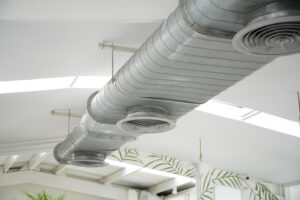 |
| Ductless (aka Mini-Split) | HVAC unit that connects directly to the outside. | 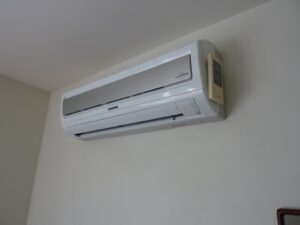 |
| Electric Panel (aka breaker box, load center, or service panel) |
A metal enclosure that distributes electricity from the utility grid to various circuits within a building. |  |
| Electric Vehicle (EV) | A vehicle that can be powered by an electric motor that draws electricity from a battery and is capable of being charged from an external source. |  |
| Electrification | The process of powering something with electricity instead of fossil fuels. | |
| Energy Audit | An evaluation of a building which identifies opportunities for energy efficiency. | |
| Energy Efficiency | Using less energy to perform the same task. | |
| Energy Star | Energy Star is an energy-efficiency program administered by the U.S. Environmental Protection Agency (EPA) in partnership with the U.S. Department of Energy (DOE). Appliances meeting energy efficiency specifications are eligible to display the ENERGY STAR logo. |  |
| Fossil Fuel | A natural fuel such as coal or gas, formed in the geological past from the remains of living organisms. |  |
| Energy Meter | A device that measures the amount of electrical energy consumed by a home. | 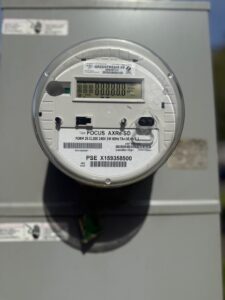 |
| Geothermal Energy | Thermal (heat) energy extracted from the Earth’s crust. | |
| Greenhouse Gas (water vapor, carbon dioxide, methane, ozone, chlorofluorocarbons, and nitrogen oxides) |
A gas that traps the sun’s heat in the atmosphere. When these gases are trapped in the atmosphere (and not reflected back into space), the planet becomes warmer than it would be otherwise. | |
| Grid | Infrastructure that delivers electricity from power plants to homes and businesses. | |
| Heat Pump | Heat pumps use electricity to transfer heat from a cool space to a warm space, making the cool space cooler and the warm space warmer (or vice versa). | 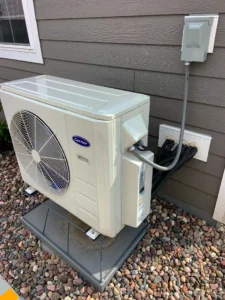 |
| Hydropower | Energy generated by moving water, often from dams. |  |
| HVAC | Heating, ventilation, and air conditioning. | |
| Insulation | Insulation is material that provides resistance to heat flow and lowers your heating and cooling costs. These include(fiberglass, rockand slag wool, cellulose, natural fibers, rigid foam boards, sleek foils, and more!) | 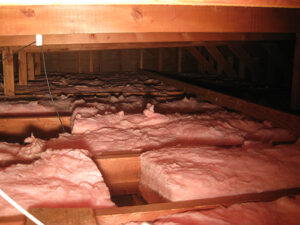 |
| Inverter | Device that converts DC power to AC power. | |
| Joule | A unit of work or energy equal to the work done by a force of one newton acting through a distance of one meter. | |
| Kilowatt Hour (kWh) | Amount of thousand-Watts used per hour. | |
| LED (Light Emitting Diode) | A lightbulb that emits light when an electric current passes through it. LEDS are more energy-efficient and long-lasting than other lighting sources such as incandescent or compact fluorescent bulbs. |  |
| Load | Amount of Watts required to power a facility at any given moment. | |
| Power | The rate at which energy is transferred, converted, or consumed (often measured in Watts). | |
| Peak Demand | The period when electricity consumption is at its highest (often early evening). |  |
| Plug-in Hybrid Vehicle (PHEV) | A vehicle that uses batteries to power an electric motor, as well as another fuel, such as gasoline or diesel, to power an internal combustion engine. PHEVs can charge their batteries through charging equipment and regenerative braking. | |
| Rectifier | Device that converts AC power to DC power. | |
| Renewable Energy | Energy that is generated from natural, replenishing sources (solar, wind, hydro, geothermal, tidal, wave). | |
| Solar Array | A collection of solar panels that generate DC electricity from the sun. | 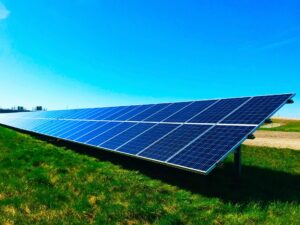 |
| Transmission Lines | Power lines that carry energy across long distances at a high voltage. |  |
| Voltage (V) | The “pressure” that pushes electricity. Higher voltages are more dangerous. Typical outlets in the US supply 120V, though high energy appliances like ovens and water heaters often require 240V outlets. | See video above for kWh. |
| Watt (W) | Unit measuring the rate at which energy is transferred or used (joules/second). | See video above for kWh. |
| Weatherization | Making a building more resistant to the effects of weather (insulation, double-pane windows, sealing cracks, etc.) | |
| Wind Energy | Energy generated from wind turbines. |  |

